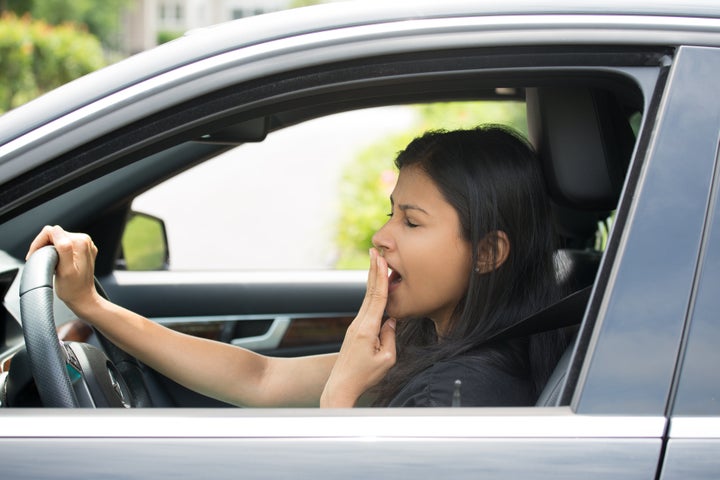
For many people, avoiding fatigued driving means staying off the roads after pulling an all-nighter. But imagine driving when you have narcolepsy, a brain disorder that causes people to suffer from chronic daytime drowsiness and fall asleep suddenly. With narcolepsy, the dangers of drowsy driving become a perennial threat.
What can a person with narcolepsy do ― never drive?
Well, no, but there are some important caveats.
Joyce Scannell, an office manager at the Narcolepsy Network nonprofit who has had narcolepsy her whole life, says she never drives more than 20 minutes at a time.
“Luckily I work from home and my kids have moved out. So it’s just: Go to the doctor, go to the store, go home,” she said. “Because if I get into an accident, the state will make it really tough to get back my license.”
Each state has its own laws about the health conditions that can prevent resident from getting a license, as well as whether those conditions must be disclosed on the license itself.
Scannell, who lives in Rhode Island, was able to get a driver’s license, and doesn’t have to disclose on it that she has narcolepsy. Other states require narcoleptic drivers to be medicated and symptom-free for a certain period of time before they can obtain a license: For example, that period is a whole year in New York, but it’s just 90 days in Kentucky.
Treatment is the key to people with narcolepsy driving safely, sleep experts say. People with narcolepsy usually take a combination of stimulants and antidepressants to combat daytime sleepiness. The prescriptions are customized to the patient, Scannell said.
“Treated narcoleptic patients can drive safely,” said Dr. Emmanuel Mignot, a sleep researcher at Stanford University. “They have to take precautions, like napping before driving, not taking long drives that require stops, pulling over if sleepy, avoiding driving alone, and having emergency medication on hand for an emergency.”
“Of course,” he added, “we don’t let them do things like drive fuel-loaded trucks or fly commercial airplanes.”
People with narcolepsy are susceptible to the same high-risk periods as regular drivers, said Ohio State University sleep expert Dr. Meena Khan.
“The natural times that people tend to be sleepy are mid-afternoon (1 to 3 p.m.) and early morning (2 to 5 a.m.),” she told The Huffington Post. “This is when we have a natural drop in our circadian rhythm, which regulates alertness. Narcoleptics may be more susceptible to this given their condition.”
Napping for 15 to 20 minutes can help alertness, as can taking stimulant medication right before a long drive, Khan said.
“A sleepy driver can be dangerous no matter what the reason,” she said.
Scannell was diagnosed with narcolepsy 20 years ago, and said she has since become highly aware of when her body wants to sleep.
“Most of the time I know when an attack is coming on, so if that’s the case, I will pull over at a rest stop or, preferably, not even get behind the wheel,” Scannell said.
“If you don’t take a nap, your body will make you take one anyway,” she said about narcoleptic people who ignore the urge to the nap.
